Tom's Hardware Verdict
The Stealth Pro is Turtle Beach’s bid for a gaming/lifestyle hybrid. It sounds good for gaming, but it’s no Arctis Nova Pro.
Pros
- +
Swappable battery system
- +
Simultaneous 2.4GHz wireless/Bluetooth audio
- +
Mic flips up to mute
- +
Games sound great
- +
ANC is (too) good
Cons
- -
Swappable batteries are only 12 hours each
- -
Looks a little cheap and generic
- -
Fit is a little off
- -
Finish is very fingerprint-y
- -
Expensive
Why you can trust Tom's Hardware
Turtle Beach is gunning for rivals Razer and SteelSeries with its new flagship gaming headset, the Stealth Pro. And, as an aside, companies need to start actually naming new products instead of just tacking “Pro” onto the name of an existing line, but I won’t fault Turtle Beach for doing this.
Announced last month and available starting April 23, the Stealth Pro is a wireless over-ear gaming headset packed with a laundry list of features and specs that match up almost exactly with SteelSeries’ Arctis Nova Pro — which currently sits at the top of our list of best gaming headsets.


The Stealth Pro has all the gaming features you wanted and didn’t know you wanted, including dual-mode wireless connectivity with simultaneous audio playback, active noise cancellation, a swappable battery system, and a detachable boom microphone and built-in beamforming mics. It sports 50mm dynamic drivers that are hand-matched for balance and has a remappable multi-function button and wheel so you can control everything on the hardware. The Stealth Pro comes in both Xbox and PlayStation versions, both of which can be pre-ordered now for $329.99.
Design and Comfort of the Stealth Pro
The Stealth Pro is a wireless over-ear (circumaural) headset with a detachable boom microphone. It’s part of Turtle Beach’s Stealth line, but it’s been redesigned to look less like a gaming headset and more like a pair of headphones you might wear on your commute. To that end, it comes in just one colorway, black, with silver accents, and the company has no current plans to release additional colors. While I understand this choice, it’s a little disappointing — the navy-and-copper version of the Stealth 700 Gen 2 Max might be my favorite headset colorway (ever).
The Stealth Pro is on the heavier side: my review unit weighed 14.74oz (418g) with the boom mic attached (14.11oz/400g without). For comparison, its predecessor the Stealth 700 Gen 2 Max weighs 13.4oz (380g), while the Corsair Virtuoso RGB Wireless XT weighs 13.47oz (382g). Both the SteelSeries Arctis Nova Pro Wireless and the Razer Barracuda Pro Wireless weigh around 12oz (340g). The Stealth Pro isn’t overwhelmingly heavy — it’s much lighter than the Audeze Maxwell, which weighs 17.28oz (490g) — but it is, for the most part, heavier than the headsets it’s competing against.

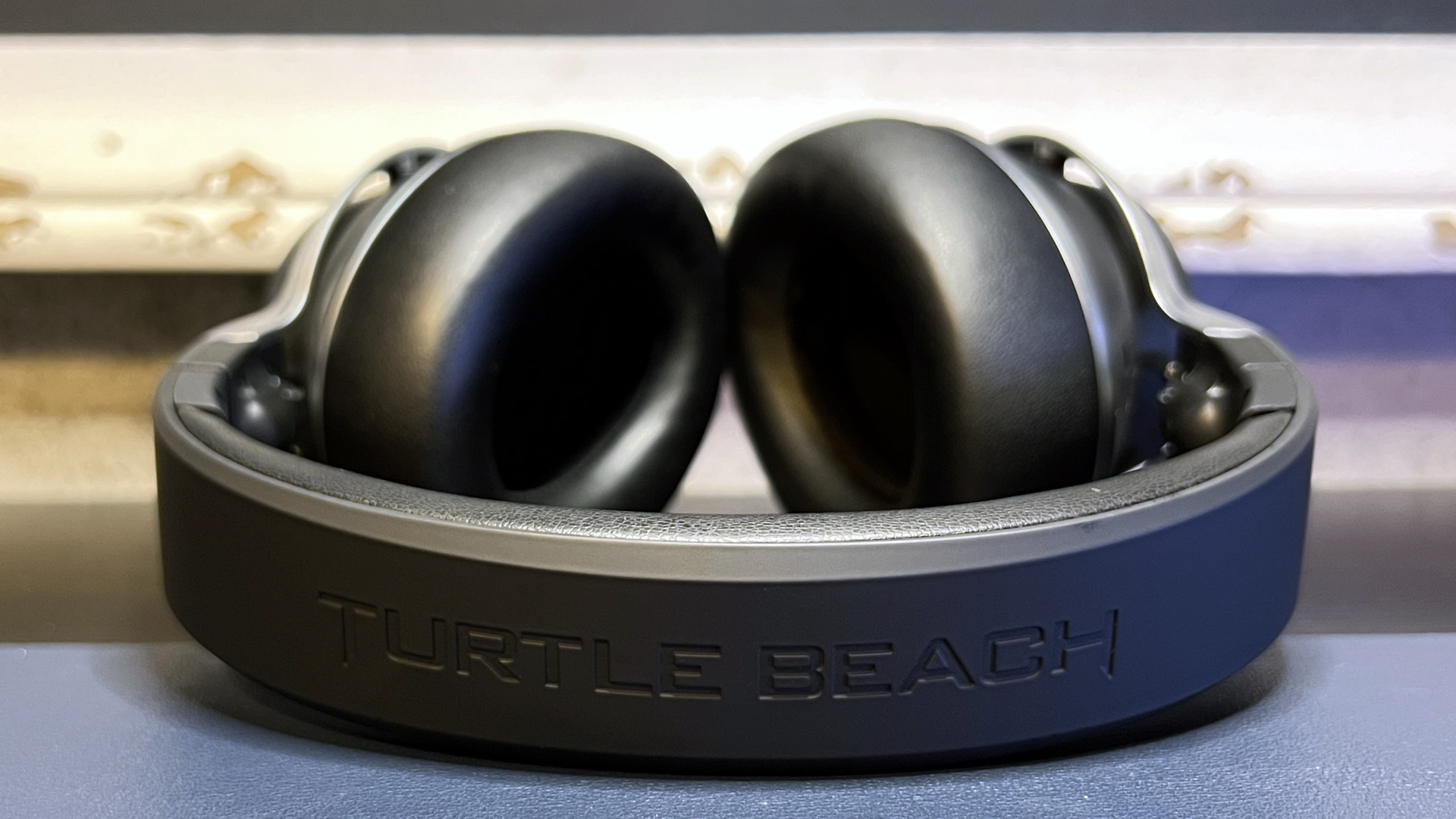
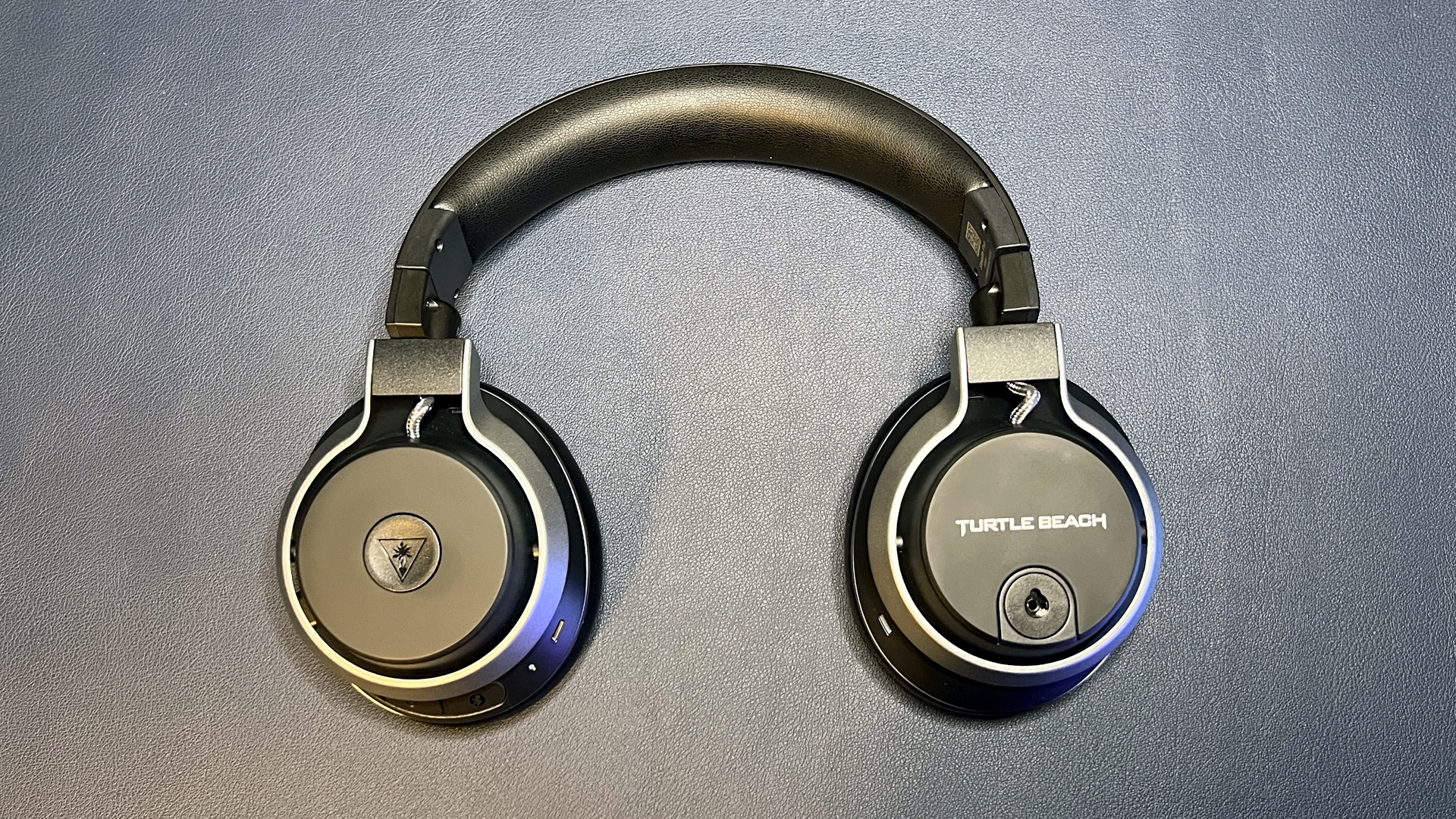

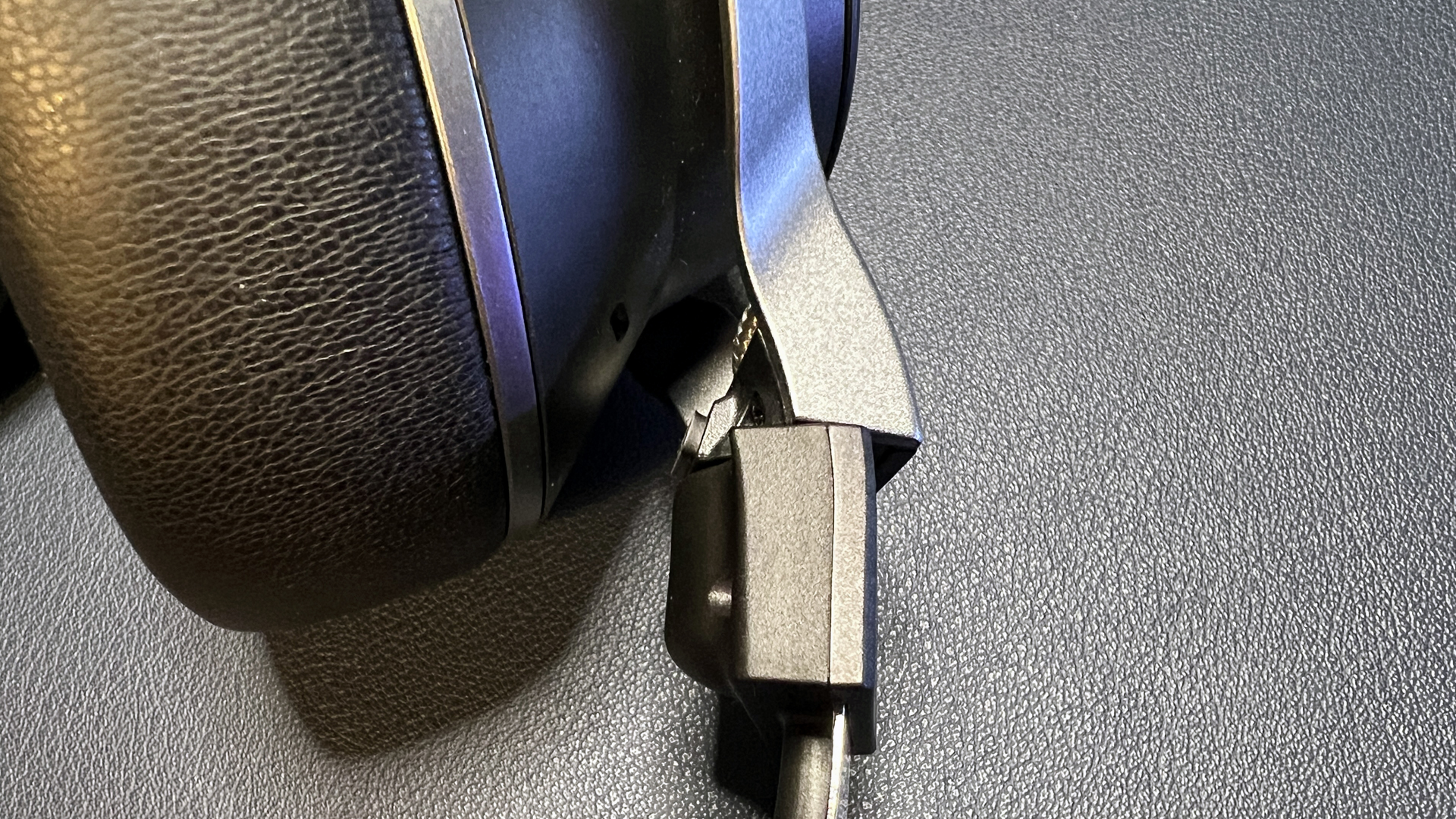
The Stealth Pro has a flexible metal headband covered in a slightly-rubbery, soft-touch material with “Turtle Beach” debossed across the top. Its earcups, which are connected via metal yokes, swivel both directions (and swivel flat for storage), tilt, and are individually height-adjustable. The earcups’ speaker plates also feature a soft-touch (though not rubbery) finish, which attracts a lot of fingerprints and, smudges and other unattractive things. I know these soft-touch finishes are kind of Turtle Beach’s thing, but covering up metal with plastic makes the headset look a lot cheaper than it is.
As far as comfort goes, the Stealth Pro is... okay. It’s not uncomfortable, but it’s not so comfortable that I forgot I was wearing it. Its clamping force is on the stronger side and the headband is a little too wide (and I don’t have a small head). Again, while it wasn’t uncomfortable, the fit felt a little off. Perhaps it would benefit from a suspension-style headband like what’s on the SteelSeries Arctis line or the Audeze Maxwell.
Get Tom's Hardware's best news and in-depth reviews, straight to your inbox.

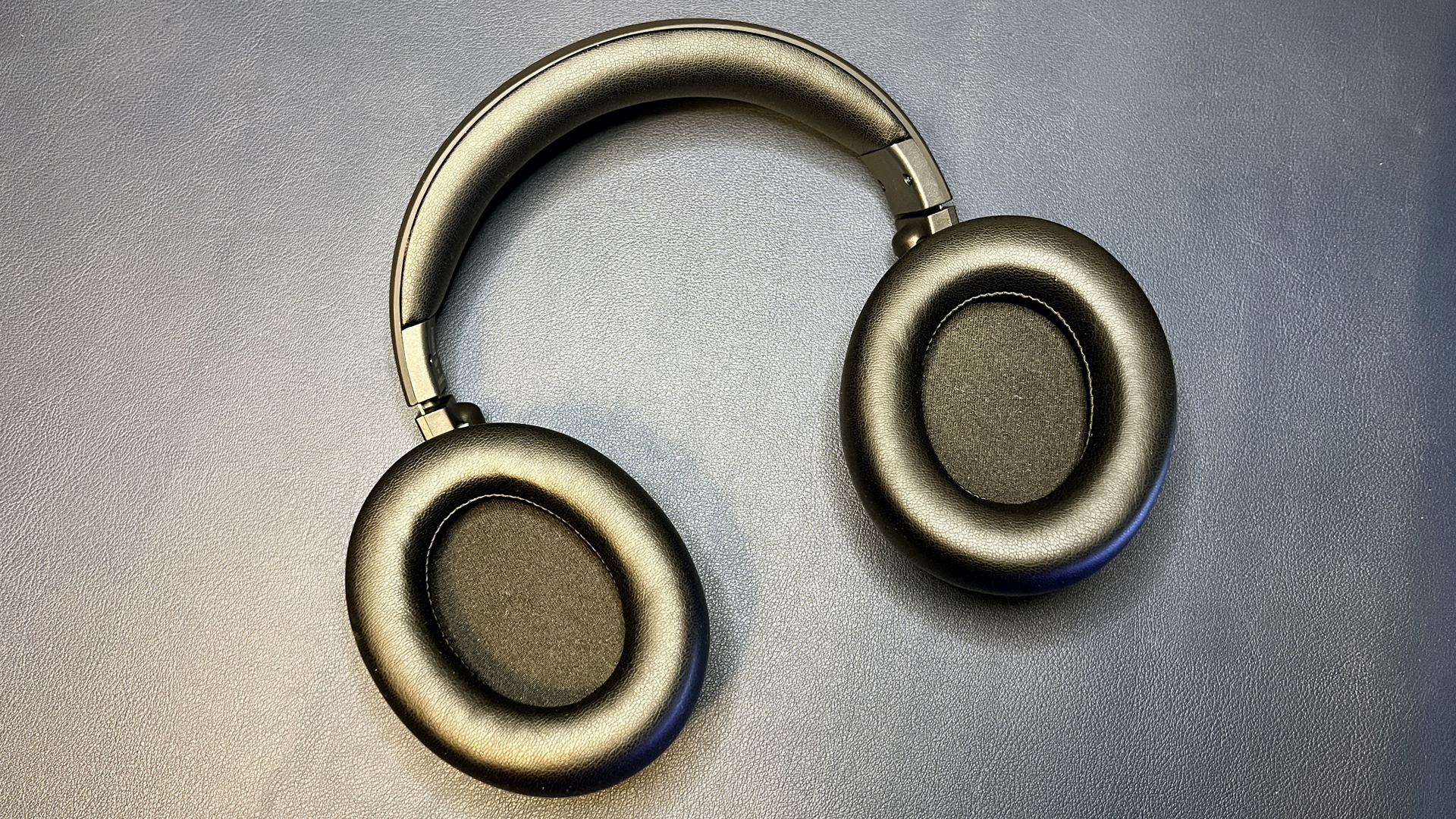
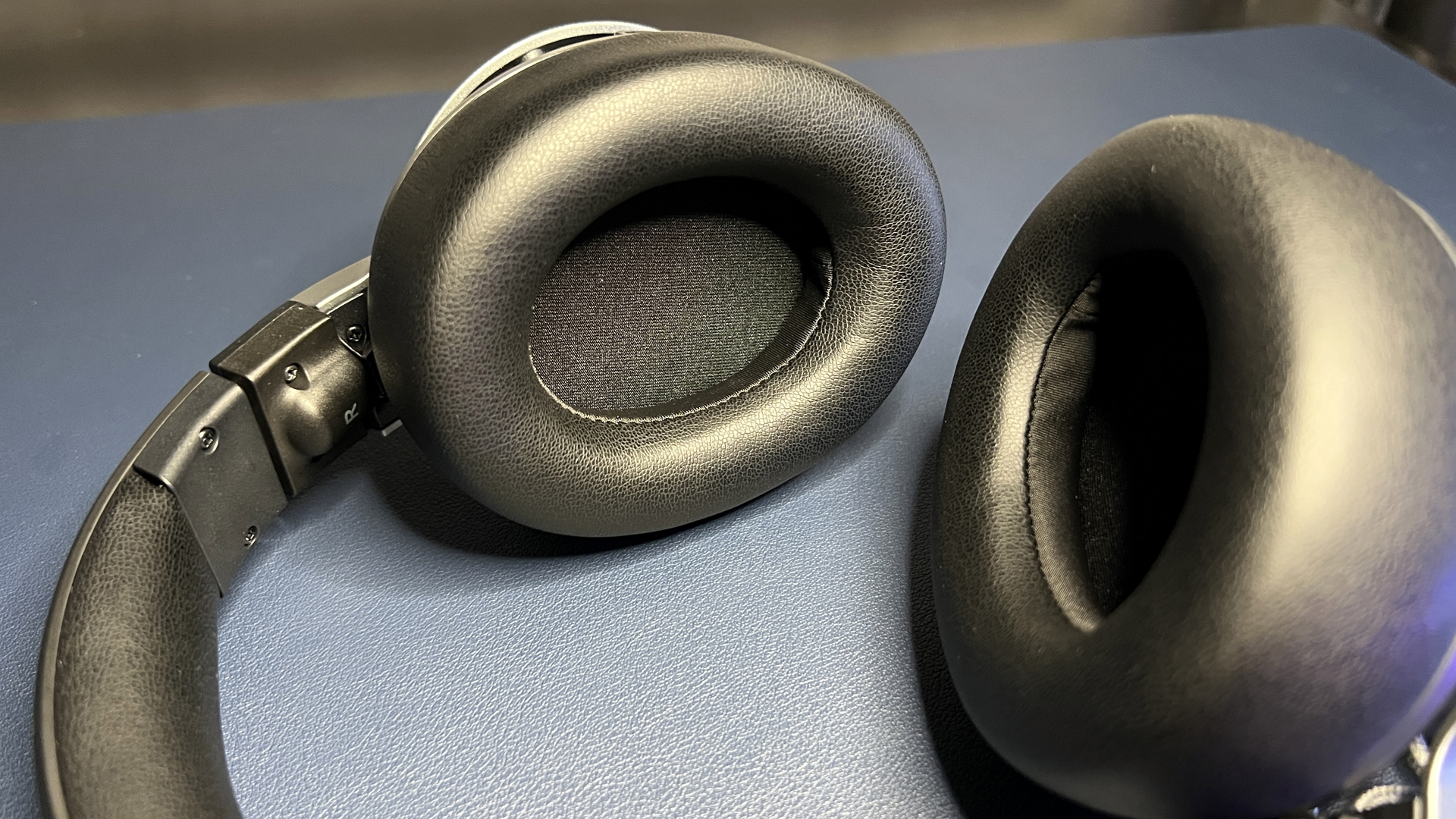
The headband and earpads are padded with memory foam covered in nice-feeling black leatherette. The leatherette is comfortable and does a reasonably good job of passive noise cancellation even without the headset’s active noise cancellation turned on, but it does hold in heat. The earpads are glasses-friendly — the foam is less dense in the area where your glasses sit, so you can wear this headset over glasses without getting a headache. I tried this headset on with my sunglasses (I no longer wear glasses), and it definitely works — the earpads put almost no pressure on the sides of my sunglasses.


Most of the headset’s controls are located on the right earcup. The face of the earcup features a remappable multifunction button and wheel. By default, the button toggles active noise cancellation and the wheel controls volume. The wheel has a secondary function, which is activated by holding down the multifunction button for three seconds. The wheel’s default secondary function is game / chat mix. The multifunction button and the wheel’s secondary function can be remapped using Turtle Beach’s companion software or mobile app.


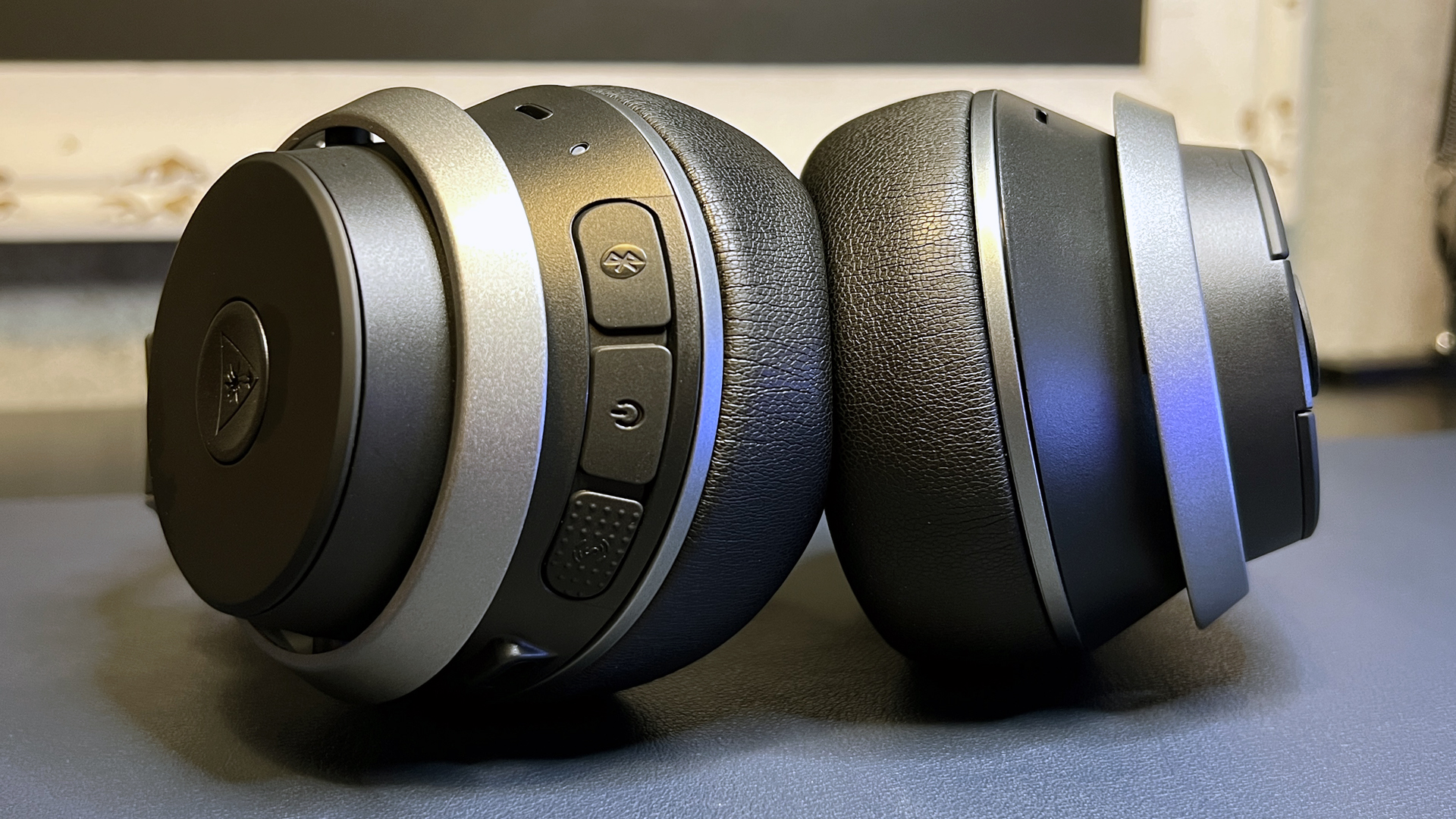
The bottom edge of the right earcup also contains three buttons — Bluetooth, power, and “Superhuman Hearing.” The power button is just a power button, but the other two buttons are multi-function. The Bluetooth button lets you pair and control a Bluetooth device, while the “Superhuman Hearing” button toggles Turtle Beach’s “Superhuman Hearing” feature — a game audio setting that pumps up key sounds such as footsteps and gunfire. Pressing and holding the Superhuman Hearing button for two seconds toggles mute for the headset’s built-in microphones, so you can mute yourself even if you don’t have the boom mic attached. These buttons are well-spaced and easy to differentiate (the Superhuman Hearing button is textured), but they’re relatively stiff and can be difficult to press.
The right earcup also has a USB-C port for charging and updating the headset’s firmware.



The left earcup houses the boom microphone jack, which is covered by a small plastic cover that I immediately lost, as well as the headset’s hot-swappable battery. The hot-swappable battery works just like the hot-swappable battery on the SteelSeries Arctis Nova Pro: it sits under a magnetic speaker plate, and so long as you remove and replace it within a few seconds, your connections won’t drop. My only issue with the Stealth Pro’s system is that the speaker plate is trickier to remove when the boom mic is attached. It’s not impossible, but it’s not the seamless hot-swap you get from the Arctis Nova Pro.
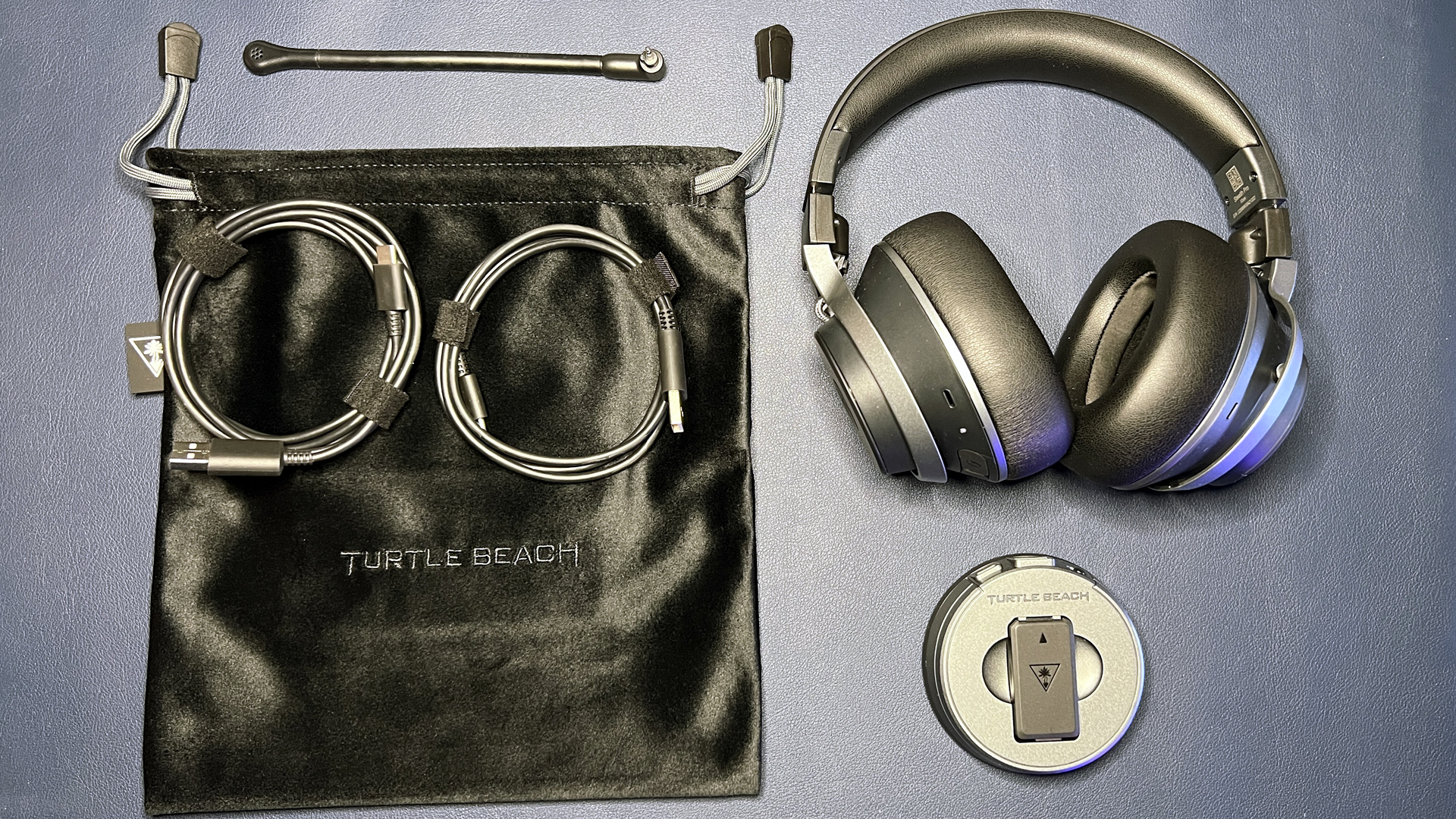

The Stealth Pro comes with several accessories in the box: the detachable boom mic, the wireless transmitter/battery charging station, two USB-C to USB-A cables (one 6.5-foot/2m cable for charging, one 3-foot/1m cable for connecting the transmitter to your PC), two batteries, and a carrying pouch. The carrying pouch, while not as robust as the rigid travel case that comes with the Razer Barracuda Pro Wireless, is pretty nice — it’s made from thick, stiff velvet fabric, and it has an inner pocket that’s large enough to hold all of the headset’s accessories (including the wireless transmitter).
Spec
Driver Type | 50mm Nanoclear |
Frequency Response | 10 Hz - 22,000 Hz |
Impedance | 32Ω |
Design Style | Over-ear (circumaural) |
Microphone Type | Detachable Boom Mic, Dual Built-in Mics |
Connectivity | 2.4GHz, Bluetooth 5.1 |
Weight | 14.11oz / 400g (without mic) ; 14.74 |
Cord Length | 6.5ft/2m USB-C to USB-A |
Battery Life | 24 hours (2x 12-hour, hot-swappable) |
Lighting | N/A |
Software | Turtle Beach Audio Hub v2 |
MSRP / Price at Time of Review | $329.99 / $329.99 |
Release Date | April 23, 2023 |
Audio Performance of the Stealth Pro
The Stealth Pro sports 50mm “Nanoclear” dynamic drivers with a frequency response range of 10 Hz - 22,000 Hz — the same as SteelSeries’ Arctis Nova Pro Wireless. This is a little wider than you’ll find on most gaming headsets (which typically stick to 20 Hz - 20,000 Hz), but it’s not the widest — Corsair’s Virtuoso RGB Wireless XT has a frequency range of 20 Hz - 40,000 Hz, while Audeze’s new Maxwell has a frequency range of 10 Hz - 50,000 Hz.
The Stealth Pro’s default sound profile (called “Signature Sound” in the EQ presets) is relatively balanced and fairly neutral — though it’s perhaps a bit too mid-range focused for me. Audio is not as detailed or layered as it is on, say, the Audeze LCD-GX or the Audeze Maxwell, but the Stealth Pro still managed to separate out most of the delicate sounds in Billie Eilish’s bad guy. Extremely heavy bass sounded a little muddy, but Kaskade’s POW POW POW didn’t turn into a swampy mess, so that’s something. My biggest issue (coincidentally, considering the Stealth Pro’s mid-focused default profile) was with mid-range heavy songs, such as K-391’s Lonely World — which sounded compressed in the mids and lower-mids on the Stealth Pro (and a little less dynamic overall).
When it came to gaming, however, the Stealth Pro was much more impressive. The Stealth Pro features Turtle Beach’s “Superhuman Hearing,” which is a game-focused setting that boosts certain sounds — such as footsteps, explosions, nearby artillery, etc — in games for a competitive advantage. It works, and it works well. I was especially impressed with how it managed to provide a significant boost to these higher-mid-range sounds without going overboard — I turned on the “footsteps” EQ preset for Audeze’s Maxwell headset last week, and I’m pretty sure my dog thought I was trying to communicate with her over high-range frequencies. But turning on Superhuman Hearing for the Stealth Pro nicely boosted the sound of footsteps and gunfire in Fortnite without aggravating my Pomeranian.
The Stealth Pro also sounded good in games with more ambient environmental noise. The jungle in Uncharted 4 sounded lush and layered, while cities in The Elder Scrolls Online had plenty of depth and busyness — even though the Stealth Pro has a much narrower soundstage than, say, the Audeze Maxwell. This headset might not be my go-to for listening, but it’s a great gaming headset.
The Stealth Pro has active noise cancellation (ANC), which is still a fairly uncommon feature on the best wireless gaming headsets — though we’ve been seeing it more often on premium headsets designed to cross over into the lifestyle sphere. Both the SteelSeries Arctis Nova Pro Wireless and Razer Barracuda Pro Wireless have it, as does the Epos H3Pro Hybrid. The Stealth Pro’s ANC is adjustable, from full transparency/ambient mode to full noise canceling. And it’s very good — even at 50% it was able to completely cancel out the hum of my 47 PC case fans (an exaggeration, but it’s still no small task). At 100% it was too good, and I found myself getting dizzy from the lack of... well, noise. At 0% (full transparency/ambient mode), it actually amplifies the sounds around you.
Microphone of the Stealth Pro
The Stealth Pro comes with a detachable cardioid boom microphone as well as built-in beam-forming microphones in the earcups. The boom mic plugs into the mic jack on the left earcup and sits at the end of a 4.5-inch (114.3mm) flexible arm. The microphone jack is located on the face of the earcup (rather than the edge), and the boom mic can be rotated up and out of the way.






Rotating the mic up mutes it, which is a fantastic feature — I’ve used a lot of headsets and it’s hard to tell if your mic is hardware-muted with buttons or switches (mostly because it’s hard to remember which button/switch direction is mute/unmute), but there’s no question with this mic — if you can’t see it, it’s muted. But if you need an additional visual cue, the wireless transmitter flashes red when your mic is muted. It’s a solid green when your mic is on, and this also works when the boom mic is unplugged and you’re using the headset’s built-in mics.
All the hardware features of the mic aside, the first thing I heard from my coworkers when I logged on with the Stealth Pro was “You don’t sound as good as you normally do” and “I feel like there’s more... static?” Naturally, I immediately started mic testing when I logged off, and after playing around with some settings in the software I didn’t think it sounded that bad so I logged on the next day only for everyone to say, “You still sound worse than normal.” At this point I thought it might be the connection type — I was connected via Bluetooth because I was playing a full-screen game on my PC and didn’t want to switch windows, so the next day I logged in on my PC. I got the same comments — “You sound a little staticky? Or maybe that’s on my end?” — but ultimately people agreed that I sounded fine and the microphone clearly works well enough, even if it’s not perfect.
I’m not sure if my coworkers are spoiled by my normally incredible broadcast-quality recording equipment, but the boom microphone on the Stealth Pro sounds fine — it’s not the best gaming microphone you can find, but no headset boom microphone is or ever will be. My voice sounds relatively full and is clear enough, and the microphone is definitely on par with boom mics on similarly priced headsets.
But you can judge for yourself — here’s a test recording on the Stealth Pro boom mic:
The Stealth Pro’s built-in microphones are not quite as good as the boom microphone, but they’re not bad — they’re pretty sensitive, so they managed to pick up my voice fairly loudly and clearly (though they also picked up a lot more background noise). While I wouldn’t use the Stealth Pro’s built-in mics to do a guest spot on NPR, they seem like they’ll work fine for most casual situations — including communicating with your teammates while gaming.
Features and Software of the Stealth Pro
The Stealth Pro can be configured using the Turtle Beach Audio Hub V2 PC software or the Turtle Beach Audio Hub mobile app. I initially had trouble getting the PC software to recognize the headset when it was connected to my PC, but this seemed to be a pre-production bug. I was eventually able to connect, but I had better luck in general with connecting to the mobile app — which has the same functionality (minus the PC-specific hotkey mapping).
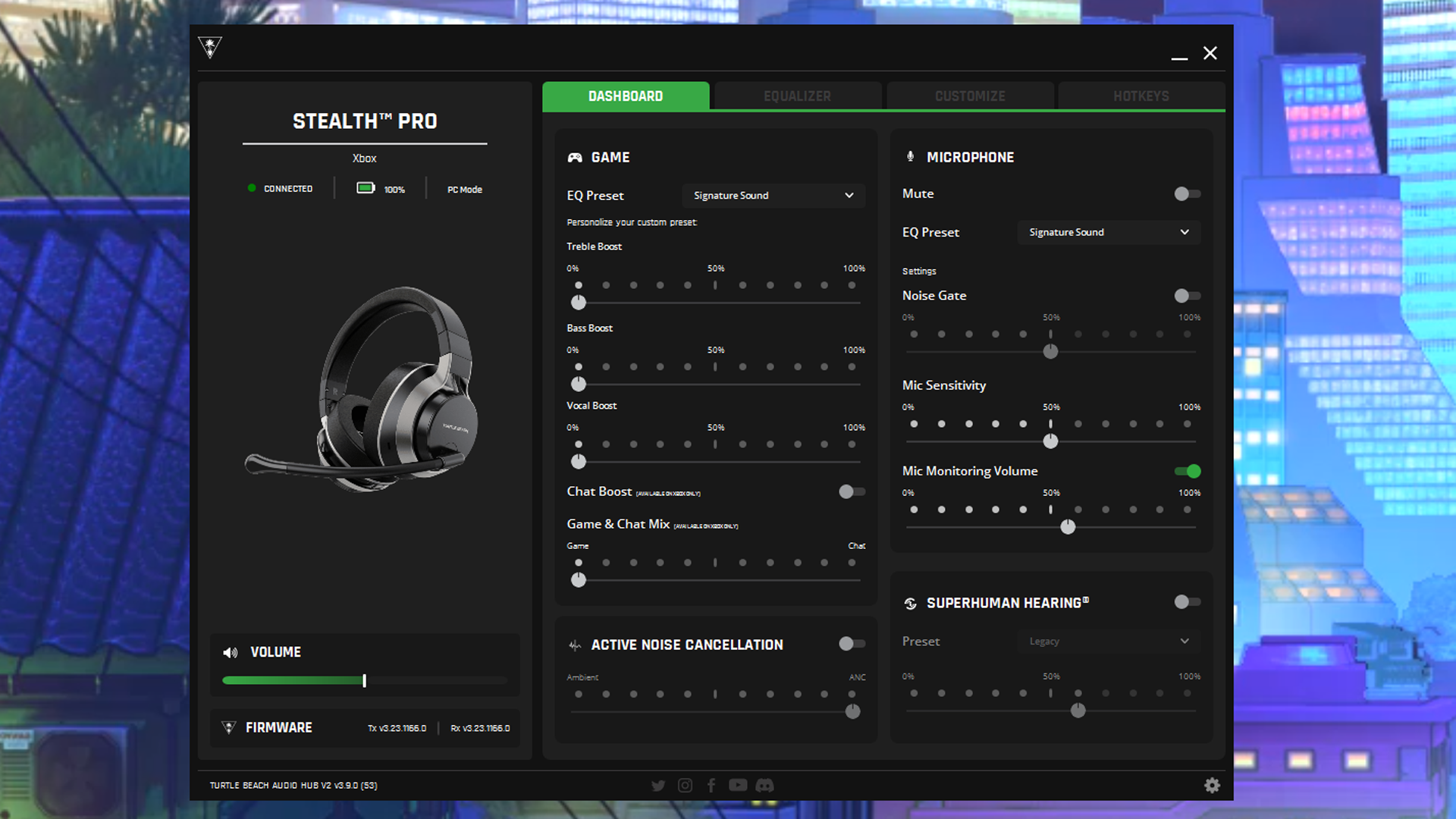



You can use the Audio Hub V2 or the Audio Hub app to adjust the Stealth Pro’s various EQs, which include a number of “basic” adjustable presets for both audio and mics, as well as a 10-band “advanced” EQ for those who want more control. The Audio Hub also lets you toggle several settings that you can (for the most part) also access on the headset itself, including ANC, Superhuman Hearing, noise gate, and mic sidetone.
But the main reason you’ll want to use the software is probably going to be so you can remap the multifunction button and the wheel’s secondary function — which you can also do on the mobile app. The button can be programmed to toggle ANC, noise gate, or cycle through game presets, or it can be set as a standard multi-function button. The wheel’s secondary function can be set to adjust mic sidetone, ANC level, Bluetooth volume, Superhuman Hearing volume, bass boost volume, treble boost level, noise gate volume, or mic sensitivity.
The Stealth Pro’s software is a little rough around the edges — like most gaming peripheral software, unfortunately. But the good news is that any changes you make using either the software or the mobile app immediately save directly to the headset — so you shouldn’t need to use the app too often once you’ve got the Stealth Pro set up.
Wireless Performance of the Stealth Pro
The Stealth Pro offers two forms of connectivity — both of which are wireless: low-latency 2.4GHz wireless and Bluetooth 5.1. It does not have a 3.5mm jack for a wired analog connection, which is (I suppose) not too surprising. I would have liked an analog option, but I’m probably in the minority there.


It connects to 2.4GHz wireless via the wireless transmitter (in lieu of a dongle), which is not particularly convenient for those who don’t want to deal with the extra heft of the wireless transmitter, but also not terribly surprising — after all, the Arctis Nova Pro Wireless connects via its base station. On the back of the wireless transmitter you’ll see a switch for jumping between console/PC mode, a USB-A charging port, and a USB-C port for connecting to your console or PC. It’s decidedly less useful than the Arctis Nova Pro Wireless’ base station, which not only lets you control a variety of hardware settings but also has two USB-C ports so you can connect to multiple systems at once.


The Stealth Pro lets you connect to both 2.4GHz wireless and Bluetooth 5.1 and can play audio from both connections simultaneously. This might seem like a niche feature, but it’s one of my must-haves, because it means I can play a full-screen game on my PC while also taking a meeting on my phone (this is what I do almost every morning during the Tom’s Hardware morning meeting).
The Stealth Pro doesn’t give you an easy way to adjust the mix between the two audio sources, however. You can adjust the volume of each source separately by assigning “Bluetooth volume” as the secondary wheel function (the primary wheel function controls the main — 2.4GHz wireless — source audio), but this is pretty clumsy. There are headsets that handle this better, such as Logitech’s G735, which has a rocker button that you can use to mix the 2.4GHz wireless and Bluetooth sources.
Battery Life of the Stealth Pro
The Stealth Pro comes with two 12-hour batteries that can be hot-swapped for a total of 24 hours of battery life on a single charge. The wireless transmitter doubles as a battery charging dock, so — in theory — you’ll never run out of juice, so long as you’re gaming at home on your PC or console.
This is exactly the same system as SteelSeries’ Arctis Nova Pro Wireless, right down to the base station-slash-charging dock. And while it’s a great system for at-home use, it’s less convenient when you’re away from your PC (or console). Assuming you don’t want to lug a wireless transmitter around with you, the headset now only has 12 hours of battery life when you’re on the go, which is... not much. Most headsets easily get twice that — the Stealth 700 Gen 2 Max gets up to 40 hours on a single charge. Even the Arctis Nova Pro Wireless’ swappable batteries get 18 - 22 hours each.
I like the hot-swappable battery system in general, because it means you essentially have unlimited battery life while you’re near the wireless transmitter. But when you’re not near the wireless transmitter, you’re probably going to want a little longer than 12 hours.
Bottom Line
I was excited for the Stealth Pro — I’ve been a big fan of Turtle Beach headsets for years, and the Stealth 700 Gen 2 Max is one of the few headsets I have that I know will just work (hey, it’s hard out here for a peripherals editor). But the Stealth Pro is sort of underwhelming. It’s clearly going for SteelSeries’ Arctis Nova Pro Wireless, but it just doesn’t go far enough.
Don’t get me wrong, the Stealth Pro has its strengths — its audio performance didn’t blow me away when I was listening to music, but games sounded great thanks to Turtle Beach’s Superhuman Hearing audio presets. The microphone, despite being hated on by my coworkers, is solid for a headset mic, and the built-in mics are better than expected. The ANC is good — too good — and the headset also comes with a nice carrying bag that will at least keep everything together when you’re traveling with it.
But if Turtle Beach is going to go up against SteelSeries, it’s going to have to try a little harder. It’s nice to see a swappable battery in a headset that’s not SteelSeries, but not one that gives half the battery life. And while I’m glad to see Turtle Beach is stepping outside of its comfort zone with a more lifestyle-oriented design, this headset definitely doesn’t look like it costs $330.
MORE: Best PC Gaming Headsets
MORE: Best Wireless Gaming Headsets
MORE: Best Gaming Keyboards
MORE: Best Gaming Mouse

Sarah Jacobsson Purewal is a senior editor at Tom's Hardware covering peripherals, software, and custom builds. You can find more of her work in PCWorld, Macworld, TechHive, CNET, Gizmodo, Tom's Guide, PC Gamer, Men's Health, Men's Fitness, SHAPE, Cosmopolitan, and just about everywhere else.
-
Sleepy_Hollowed I mean, design and heft aside, I’d consider it.Reply
Steelseries is just has had beasts of designs, though they could misstep.
The mute function in this is great for an office though. -
Sarah Jacobsson Purewal Reply
Agree on the mute function! I love the flip-to-mute, especially with a removable mic.Sleepy_Hollowed said:I mean, design and heft aside, I’d consider it.
Steelseries is just has had beasts of designs, though they could misstep.
The mute function in this is great for an office though.



